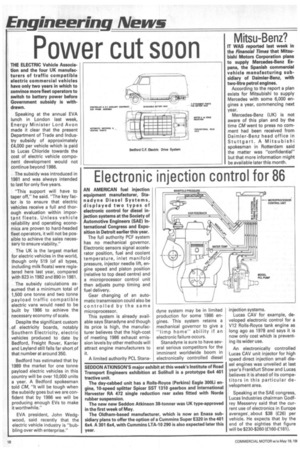Electronic injection control for 86
Page 20

If you've noticed an error in this article please click here to report it so we can fix it.
AN AMERICAN fuel injection equipment manufacturer, Stanadyne Diesel Systems, displayed two types of electronic control for diesel injection systems at the Society of Automotive Engineers (SAE) International Congress and Exposition in Detroit earlier this year.
The full authority PCF system has no mechanical governor. Electronic sensors signal accelerator position, fuel and coolant temperature, inlet manifold pressure, injector needle lift, engine speed and piston position (relative to top dead centre) and a microprocessor control unit then adjusts pump timing and fuel delivery.
Gear changing of an automatic transmission could also be controlled by the same microprocessor.
This system is already available says Stanadyne and though its price is high, the manufacturer believes that the high-cost of meeting 1986 exhaust emission levels by other methods will attract engine manufacturers to it.
A limited authority PCL Stana dyne system may be in limited production for some 1986 engines. This system retains a mechanical governor to give a "limp home" ability if an electronic failure occurs.
Stanadyne is sure to have several serious competitors for the imminent worldwide boom in electronically controlled diesel injection systems.
Lucas CAV for example, developed electronic control for a V12 Rolls-Royce tank engine as long ago as 1978 and says it is now only cost which is preventing its wider use.
An electronically controlled Lucas CAV unit injector for high speed direct injection small diesel engines was unveiled at last year's Frankfurt Show and Lucas believes it is ahead of its competitors in this particular development area.
Speaking at the SAE congress, Lucas Industries chairman Godfrey Messervy said that the current use of electronics in Europe averages'.. about $38 (£26) per vehicle. He expects that by the end of the eighties that figure will be $230-$260 (£160-£181).
























































































































